Z: The Final Countdown Read online
Page 16
Of more use, he had two-dimensional arrays of sections of ground taken by super-cooled infrared sensors aboard the KH-12. This thermal imaging didn’t care if it was night or day. It displayed everything in each section according to levels of heat, the computer separating out ground clutter and then analyzing what was shown to give it a signature. It could differentiate as little as a half of a degree difference in objects on the ground.
That done, Waker wrapped up the information inside an e-mail secure package and sent it back to the return address—USAMRIID. He had to go to his Directory of Federal Agencies to find out what that was, and when he did, he had to wonder, not for the first time, what exactly was going on in Angola.
One other thing Waker noted, as he keyed the message off, was that the same request had also gone to the NRO—the National Reconnaissance Office. That meant that USAMRIID was going to get the entire package of top-of-the-line material that the U.S. intelligence community had to offer, because Waker was one of the few people with a high enough clearance to know that the NRO was in charge of Aurora, and he’d seen what Aurora could do.
Nellis Air Force Base, Nevada, 15 June
Hidden deep inside the Nellis Air Force Base range is a highly classified facility known by various names—Area 51, the Ranch, the Skunk-works. UFO enthusiasts believe that the government test flies UFOs there. At the present moment, the vehicle being wheeled into place at the end of the longest runway in the world might well be called a UFO, although it was not made by aliens, but rather by human hands, and designed by the best minds in the aerospace business.
The plane began rolling forward. The successor to the famous SR-71 Blackbird, Aurora had made its maiden flight in 1986. At a billion dollars a plane, there were only five in the inventory. To the public that had financed it, the plane didn’t exist, one of the most closely guarded secrets in the air force.
Shaped like a rounded manta ray, the two-man reconnaissance plane’s most significant features were its huge intakes under the front cockpit and large exhausts behind the engines. Capable of Mach 7, over five thousand miles an hour, or almost a mile and a half a second at maximum speed, it could get to a target in a hurry. Even a target on the other side of the Atlantic Ocean and in the southern hemisphere.
With sufficient thrust built up, Aurora suddenly bounded up into the air and accelerated while climbing at a seventy-degree angle, gradually turning toward the southeast.
An hour and a half—and one in-flight refueling—later, the plane was approaching the coast of Africa just opposite Western Sahara. In the cockpit, the pilot kept his concentration on flying the plane while the reconnaissance systems officer (RSO) in the backseat fed him navigational guidance. “All systems on. We’ll be in range of target in seventy-five seconds.”
The fact that they had to overfly—and thus violate the airspace of—a third of the countries of western Africa didn’t disturb the crew. They were moving so fast that by the time anyone realized that something was overhead, they’d be long gone.
“Fifty seconds.” They were now over land. Niger flitted by underneath, then Nigeria.
“Descending through fifteen thousand,” the pilot announced. “Slowing through two point five. The look will be right,” he told the RSO, giving a direction to orient all the sophisticated reconnaissance systems on board the aircraft.
“Pod deploying,” the RSO said as the speed gauge continued to go down. Now that they were under two thousand miles an hour, the surveillance pod could be extended. Doing it at higher speeds would have destroyed the necessary aerodynamics of the plane and caused it to break and burn. Even now the skin temperature of the aircraft was eight hundred degrees Fahrenheit. “Twenty seconds. All green.”
“Leveling at three thousand,” the pilot said. “Steady at Mach two.”
“All systems on.”
The RSO activated their low-level light television (LLTV) camera. The LLTV was no ordinary television. The camera enhanced both the light and image, giving it the ability to display an image at night, while at the same time carrying a magnification of over one hundred. The RSO began scanning ahead, using the information fed to it from the satellites above to confirm their location.
“Sixty miles from the border,” the pilot announced.
“I’m rolling film,” the RSO said.
The plane traversed Angola from north to south, the entire country going by in just a couple of minutes.
“One more pass, this time over a bit to make sure we cover the border with Zambia and Zaire,” the pilot said.
He banked the plane and began making a sweeping turn that encompassed most of the southern tip of Africa before he was through. Once more they flew over Angola and the RSO took pictures.
Done, they turned for home while the RSO transmitted in digitized form the videotape they had just taken.
Chapter 11
Cacolo, Angola, 16 June
Conner didn’t feel the need to do any voice-over as Mike Seeger filmed the Chinook helicopter coming in to land in the open field to the south of the quarantine area. Beanbag strobe lights flickered from the ground, and the large chopper’s searchlights gave the scene an eerie glow. The thump of the massive blades and the swirling dirt and grass kicked up by their downdraft further added to the eerie effect.
But when the back ramp on the chopper came down—that was when Conner truly felt like she had entered the twilight zone. Two men clad in blue full-body suits with large backpacks waddled off. Their heads were totally enclosed by hoods and masks. The second the men were clear, soldiers from the AOB ran on board the Chinook and started unloading gear.
Conner glanced at Riley. His face was impassive, his dark eyes watching the two men walk around to the gap in the wire. “They seem to be taking this pretty seriously,” she said.
“I told them to do this so you could film it,” Riley said. “Looks pretty impressive, doesn’t it?”
“Next time, don’t do me any favors,” she said. She followed Riley as he walked over to their side of the gap in the wire. Master Sergeant Lome didn’t seem to be too happy about the men’s gear either.
“Who are you?” he demanded.
The voice that came out of the small box that hung on the first man’s shoulder was coldly mechanical. “I’m Major Tyron.” A blue arm briefly lifted and pointed at the second figure. “This is Dr. Kieling. We’re from the United States Army Medical Research Institute of Infectious Diseases at Fort Detrick. We saw the video your medic filmed. We’re here to check things out.”
Lome stepped back from the opening. “This is Sergeant Comsky,” he said.
“I recognize you from the film,” Major Tyron said. “You did a good job.”
“Lieutenant Vickers is in command here,” Lome added. “She’s in the tent, unconscious. Sergeant Comsky just finished setting her ankle.”
“We need to see the body,” the second suited figure with “Kieling” stenciled on the chest spoke up. “We only have a limited amount of air in our suits and there’s a lot that needs to be done.”
“I can help you with samples if you need them,” Comsky said.
“We’ll do the body. No need further exposing you to it. But, we need samples from everyone who might have been exposed.” Kieling held up the kit in his right hand. “Blood, stool, and urine from everyone.” He put it down on the ground and stepped back.
“What? Are you afraid he’s going to attack you or something?” Conner said as Comsky moved forward and picked it up.
“We’re just using proper protocol,” Major Tyron said. “We’re not used to working in these suits outdoors and we’re being careful.”
“The body is this way,” Sergeant Lome said.
“Everyone with me,” Comsky called out.
Tyron listened to the quiet thump of the rebreather tank on his back. He’d never worn a field suit before and didn’t feel secure in it. Everything had happened so quickly once they had landed in Angola. There was the rapid transfer from the B-l b
omber to the Chinook under arc lights at the Luanda airport. Soldiers had hustled the gear out of the bomb bay while others stood around, staring, wondering what the hell a B-l bomber was doing here and who the two men were who were getting such treatment—one of the two looking like a civilian at that! Then had come the rigging of the suits in the back of the helicopter on the way in. Tyron hoped he’d gotten it on correctly He could all too easily remember the video of Sergeant Ku dying.
Tyron looked around. Jesus Christ, the idiots had barbed wire all around the damn place! All they needed was one nick and the suit’s integrity was gone. He could just as easily trip and cut through his three sets of gloves on a rock. Kieling was right; this wasn’t the lab.
Tyron followed Kieling around, through the gap in the wire. The quarantined people were watching him. They were armed and didn’t look very happy. He didn’t imagine he’d be too happy, either, to be stuck on their side of the wire.
They edged their way into a tent, brightly lit on the inside. Two big coolers took up most of the center. The large black soldier pointed at one of them. “That’s Sergeant Ku.” He then left.
Kieling threw open the lid of the cooler. He carefully opened up the ponchos hiding the body. Despite all his autopsies of monkeys and his medical training, Tyron had to control himself to prevent his revulsion from showing. Immediately he realized the stupidity of that—Kieling couldn’t see his face behind the glazed plastic of the suit mask.
“Classic Ebola symptoms,” Kieling said, his gloved hands already into what remained of the man. “But that doesn’t guarantee it’s Ebola.” He pointed at Ku’s chest. “Look at the rash we saw in the video. It’s all over him. We’ve never seen that with Ebola.” With the tip of the scalpel he touched flesh. “Notice these pustules—I’ve never seen anything like them before.”
“The chopper’s waiting for samples,” Tyron reminded him.
“Yeah, and we can test here with what I brought,” Kieling said. “The thing that bothers me is the timing.” His fingers were probing Ku’s internal organs. “Ebola takes two weeks. Here it sounds like a week, maybe six days, according to the information we received on the way over. I’ve never heard of anything working that quickly.” He carefully cut with a scalpel. “Tube.”
Tyron held out a sample tube and Kieling dropped in a bit of flesh and blood.
“Another.”
The process was repeated several times, from different parts of the remains.
“We’ll know shortly what it isn’t,” Kieling said as he lowered the lid on the cooler and headed for the tent exit.
Twenty minutes later, Conner was more irritated than scared. GP medium tents didn’t allow for much modesty, although Comsky had cleared everyone else out when he’d gotten her samples.
“What now?” she asked as Comsky packed her samples in one of the small coolers the two spacesuit men had brought.
“Get some sleep,” Comsky suggested, walking toward the exit.
“Get some sleep?” Conner repeated, incredulously.
“It’s a good idea,” Riley was holding up the tent flap. He’d been waiting outside.
“Great, just fucking great,” Conner muttered. She walked past him. The two men were walking back out the wire, carrying their loads of flesh, blood, and other specimens. Their arrival was played out again in reverse, except they only put some samples on the helicopter and it flew away to the west. The two men continued on to the special habitat that they had brought with them and that had rapidly been set up by AOB personnel about two hundred meters away. All it needed was to be inflated. The two scientists disappeared into the entrance of the habitat.
Conner walked to the edge of their compound and watched until they were gone. She noted that Riley had followed her. As the Chinook disappeared, silence descended.
“Scared?” Riley said.
“Are you?”
“Yes.”
Conner turned and faced him. “Aren’t you supposed to never be scared?”
“You saw me scared in Antarctica,” Riley said.
“This is different. You were getting shot at down there.”
Riley nodded. “You’re right. This is different. I’m more scared now.”
Conner didn’t say anything to that. She waited, wrapping her arms around herself, feeling cold in the dark.
“I think all of us are,” Riley said, gesturing around at the tents. “Fear is always the strongest when there’s nothing you can do and you aren’t sure what the threat is.”
“That pretty much pegs this situation,” Conner agreed.
They walked around, following the inner curve of the wire.
Riley halted and looked up at the night sky. “I used to think sometimes about warriors in the old days. You know, Vikings and people like that. The Romans. When men hacked at each other with swords and you looked your enemy in the eye.
“I thought it took real balls—no sexism intended—to do that. To have to stand toe to toe and use cold steel on your opponent. But then I turned it around and imagined what one of those warriors would think about the way we fight now. To have your enemy be over the next hill and lob a shell at you. To never see or hear the man who kills you. I think that would have terrified those men. Did you know that in this century more soldiers have been killed by artillery fire than by direct rifle or machine-gun fire?
“But this.” Riley took a deep breath. “To face an enemy that isn’t even human. That you will never see. That you can’t fight with a rifle or with airplanes or bombs. That, according to Comsky, we can’t even fight with medicine. To be helpless. It’s bad. Real bad.
“I’ll tell you one thing,” he added. “The generals who planned this operation didn’t include this in their contingency plans.” He pointed at the habitat. “I hope they know what they’re doing.”
The habitat had not been designed for this use, Tyron knew. It was an inflatable tent designed for MASH units to be able to operate in a chemically contaminated environment. It had two flexible Kevlar walls—an inner and outer—with the space between filled with compressed air, allowing it to be set up very quickly. On the inside, it was relatively spacious, with just the two of them in there along with their gear.
The air coming in and out was ventilated through special air filters. It wasn’t the most perfect bio-level four facility, but it was the best thing Kieling had found available in the government inventory when he’d conducted the jaunt.
The entryway was cramped, and with great difficulty Kieling and Tyron disinfected the outside of their suits. Then they unsuited, placing the garments into sealed plastic bags. The samples were inside the coolers and they carefully carried them into the habitat through the air lock. A long metal table had been unfolded there, and the rest of their gear was piled inside.
To handle a level four bio-agent required either a full suit or a glove box. On top of the table, Tyron set up the latter. It was a device, two feet wide, by two tall, by three long. It had its own one-way mini-air lock so they could put samples in. Once in, the sample had to stay there until they took the box back to the level four lab and could sterilize the inside.
There were numerous compartments so they could keep samples separate and free from mutual contamination. There was also a microscope built into the box, so they could examine the samples, although getting a good enough look to see the individual viruses would require an electron microscope, and that was one of the reasons they had sent samples back to Fort Detrick on board the B-l. What they did have to look at was a “brick”—a block of virus particles—that they had taken from Ku’s body. A brick was a seething collection of billions of virus particles, gathered together, waiting to move on to the next host.
Finished with the mechanical task of getting the box ready, Tyron stepped back and watched as Kieling went to work. Stepping up to the side of the box, Kieling stuck his hands through two openings, flexing his fingers into the heavy-duty gloves inside. Deftly, he selected blood-and-tissue samples of the br
ick they had taken from Ku.
“I’m going to test it for Ebola and Marburg,” Kieling said. He took the samples and placed them into preset tubes containing an agent that would react to the specific virus. The tubes were blue. They would turn red if the virus was recognized.
While they waited for that reaction, Kieling put another sample from the brick onto a slide and put the slide into the other end of the scope and pressed his eye up against it.
Tyron listened to the rhythmic thump of the large air generator on the outside of the shelter. Not quite the same sound as that in the level four lab back at Fort Detrick. He had to wonder whether the shelter was designed to keep them safe inside or to keep the samples they had from getting out. How long could they continue to work in the field suits? That was a question no one knew the answer to. When Kieling had gone on the jaunt, he had only used the field suits when investigating a place where he thought he might find a reservoir for a virus—not to walk around all the time in a place where a virus was already burning. Kieling’s earlier comment about not having a lot of air in the suit had not been exactly honest. The suits used a re- breather that, technically speaking, could work for four days, give or take about six hours, without recharging. The problem was basic body functions such as eating, drinking, urinating, and defecating. They were also hot to work in, and in this latitude working under the sun could easily bring on heat stroke.
Kieling’s voice startled Tyron. “I don’t think it’s X.” Kieling pointed at the microscope. “Take a look.”
Tyron bent over and peered. All he could see was a mass of particles—there was no chance of seeing an individual virus to get a visual ID.
“How can you tell that’s not X?”
“I know X and I’ve seen bricks from X.” Kieling said. “That doesn’t look like an X brick.”
“Ebola?”
Kieling looked down into the box at the four test tubes with the various Ebola reactants. They were still blue. “No.”

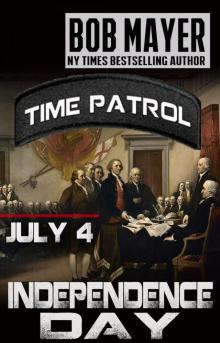 Independence Day
Independence Day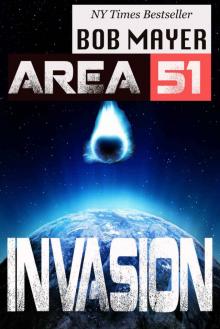 Invasion
Invasion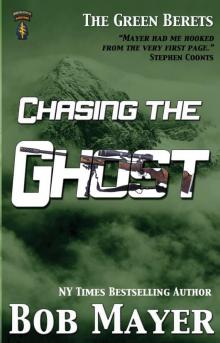 Chasing the Ghost
Chasing the Ghost Hallows Eve
Hallows Eve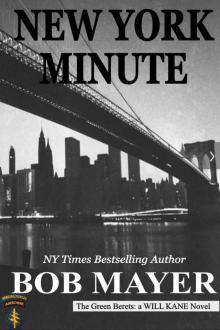 New York Minute
New York Minute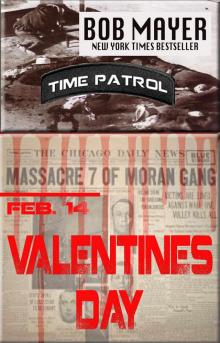 Valentines Day
Valentines Day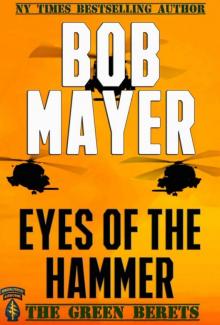 Eyes of the Hammer
Eyes of the Hammer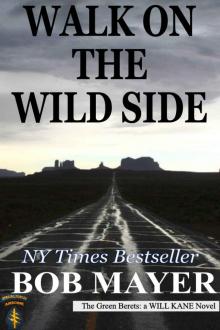 Walk on the Wild Side
Walk on the Wild Side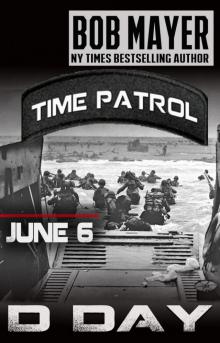 D-Day
D-Day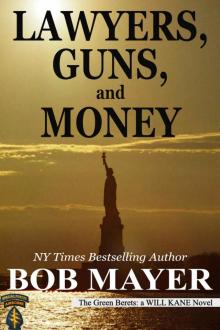 Lawyers, Guns and Money
Lawyers, Guns and Money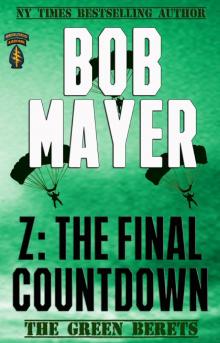 Z: The Final Countdown
Z: The Final Countdown Redemption: Area 51, #10
Redemption: Area 51, #10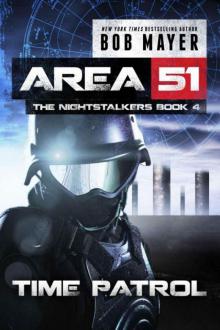 Time Patrol
Time Patrol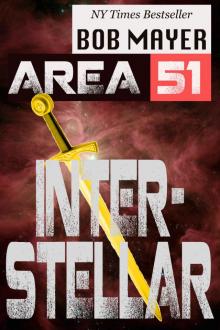 Interstellar
Interstellar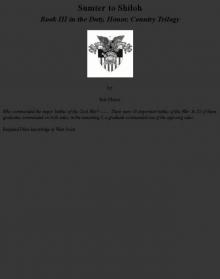 Sumter to Shiloh
Sumter to Shiloh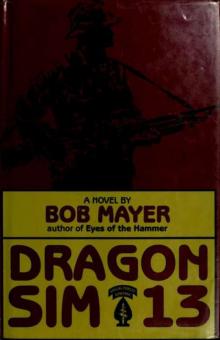 Dragon Sim-13
Dragon Sim-13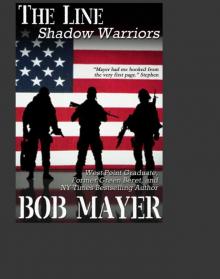 The Line
The Line Omega Missile (Shadow Warriors)
Omega Missile (Shadow Warriors)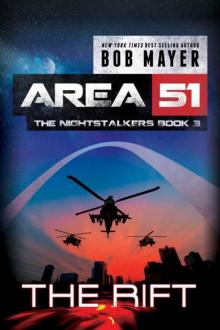 The Rift
The Rift The Jefferson Allegiance
The Jefferson Allegiance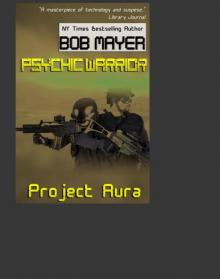 Project Aura
Project Aura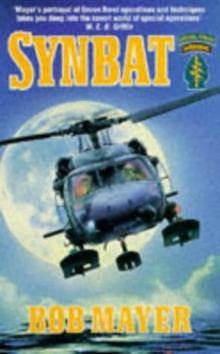 Synbat
Synbat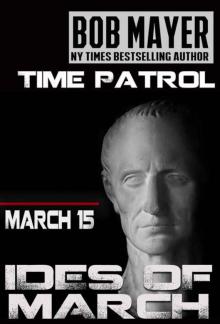 Ides of March (Time Patrol)
Ides of March (Time Patrol)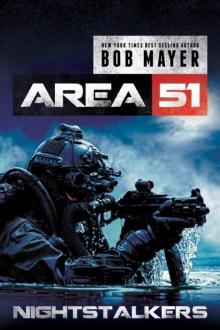 Nightstalkers a5-10
Nightstalkers a5-10 Lost Girls tc-2
Lost Girls tc-2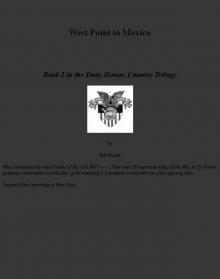 West Point to Mexico
West Point to Mexico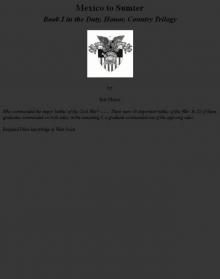 Mexico to Sumter
Mexico to Sumter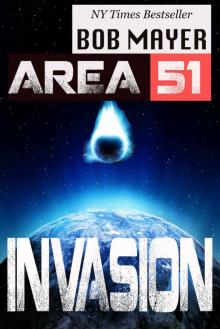 Area 51_Invasion
Area 51_Invasion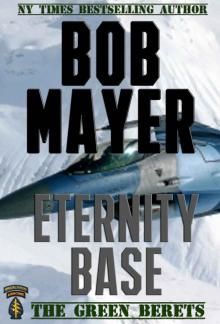 Eternity Base
Eternity Base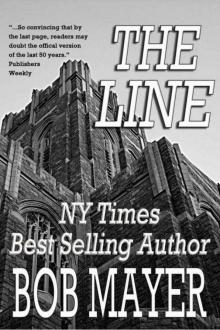 The Line bo-2
The Line bo-2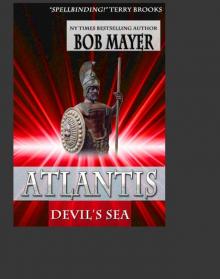 Atlantis Gate
Atlantis Gate I, Judas
I, Judas Area 51_Redemption
Area 51_Redemption Bodyguard of Lies
Bodyguard of Lies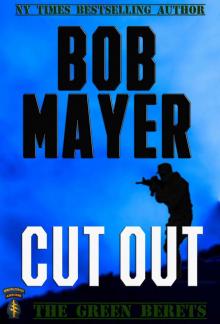 Cut Out
Cut Out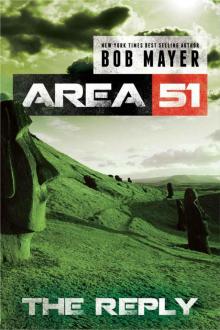 The Reply (Area 51 Series Book 2)
The Reply (Area 51 Series Book 2)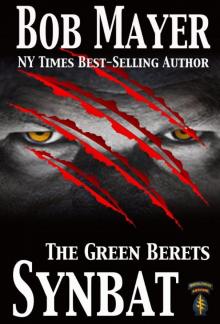 Synbat tgb-3
Synbat tgb-3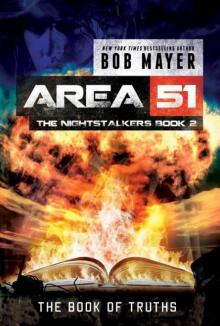 The Book of Truths a5tn-2
The Book of Truths a5tn-2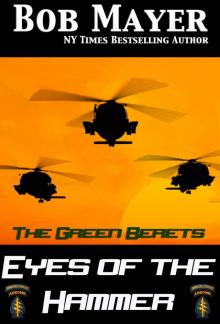 Eyes of the Hammer (The Green Beret Series)
Eyes of the Hammer (The Green Beret Series)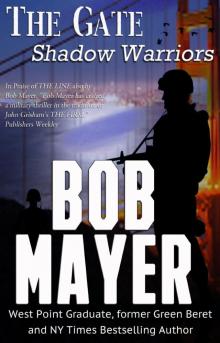 The Gate
The Gate The Gate bo-1
The Gate bo-1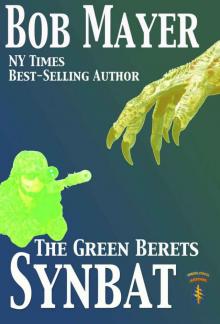 Synbat v5
Synbat v5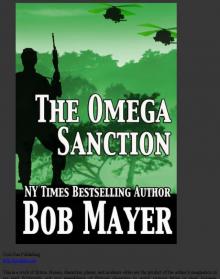 Omega Sanction
Omega Sanction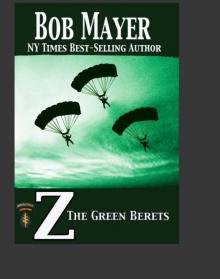 Z
Z Chasing the Son
Chasing the Son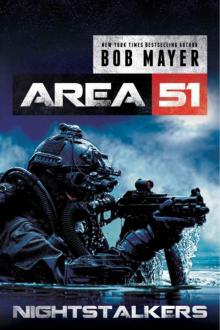 Nightstalkers
Nightstalkers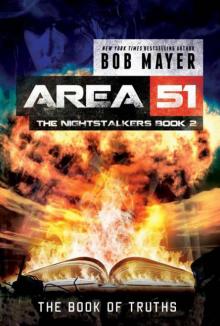 The Book of Truths
The Book of Truths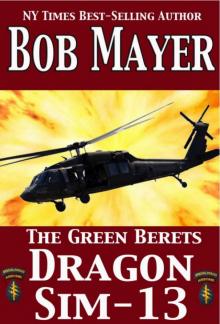 Dragon Sim-13 tgb-2
Dragon Sim-13 tgb-2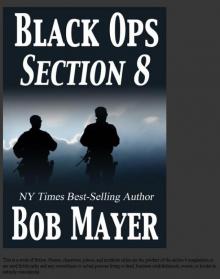 Section 8
Section 8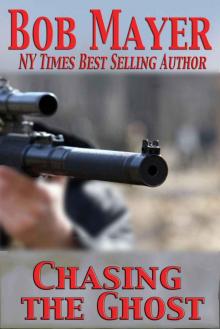 Chasing the Ghost v5
Chasing the Ghost v5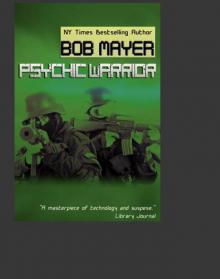 Psychic Warrior
Psychic Warrior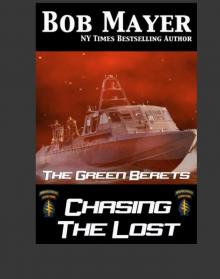 Chasing the Lost
Chasing the Lost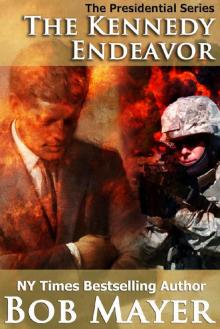 The Kennedy Endeavor (Presidential Series Book 2)
The Kennedy Endeavor (Presidential Series Book 2)